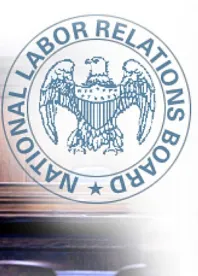On June 26, the Supreme Court of the United States struck down President Barack Obama’s controversial 2012 recess appointments to the National Labor Relations Board (NLRB). In NLRB v. Canning, __ U.S.___ (2014) (Noel Canning), the Supreme Court unanimously held that the president did not have the constitutional authority to make the recess appointments at issue. Noel Canning has sweeping implications on the separation of powers and the limits of presidential authority.
The genesis of Noel Canning’s controversy was President Obama’s attempted use of the presidential recess appointment power to fill three NLRB vacancies on January 4, 2012. At that time, the Democrat-controlled Senate was holding “pro forma sessions” every few days specifically to prevent the president from using his recess appointment power. The president asserted that, notwithstanding these pro forma sessions, the Senate was in a recess, and that he had authority to appoint three members to vacant seats on the NLRB.
These appointments were viewed as an attempted power grab by business groups, as well as by Republicans in Congress. When a three-member panel of the NLRB with two newly-minted recess appointees issued a decision against it, Noel Canning, a Pepsi-Cola distributor, sought review on various grounds, including that the NLRB lacked a proper quorum of duly appointed members. The D.C. Circuit Court agreed and on January 25, 2013, ruled that the recess appointments were invalid and that the NLRB lacked a quorum; as a result, the actions taken by the NLRB were invalid,Noel Canning v. N.L.R.B., 705 F.3d 490 (D.C. Cir. 2013).
The United States Supreme Court unanimously affirmed the D.C. Circuit Court’s decision, holding that the president’s recess appointments were unconstitutional. In reaching its decision, the court relied heavily on linguistic analysis and historical practice. In the majority opinion, the court mentioned two “background considerations” it deemed relevant. The first consideration was that the Recess Appointment Clause (RAC) sets forth a method for making appointments that is secondary to the primary method requiring Senate approval. The Supreme Court therefore sought to interpret the clause as granting the president the power to make appointments during a recess but not to routinely avoid the need for Senate confirmation. The second consideration was that in interpreting the clause, the Supreme Court put significant weight upon historical practice. Noting that history is replete with frequent presidential recess appointments, the Supreme Court remarked that when interpreting the clause for the first time in 200 years, it must hesitate to upset the compromises and working arrangements that the elected branches of government have reached.
In the majority opinion delivered by Justice Breyer and joined by Justices Kennedy, Ginsburg, Sotomayor and Kagan, the Supreme Court found that pro forma Senate sessions count as sessions, not recesses. It therefore held that for purposes of the RAC, the Senate is in session when it says it is, provided that, under its own rules, it retains the capacity to transact Senate business. Applying this standard, the Supreme Court found that the Senate was in session during the pro formasessions taking place when President Obama made the recess appointments at issue. Disagreeing with the D.C. Circuit, the Supreme Court held, however, that the phrase “the recess of the Senate” applied to both intra-session and inter-session Senate recesses. Instead, the majority held that if a recess is so short that it does not require the consent of the House, then it is too short to trigger the RAC; and that a recess of less than 10 days is presumptively too short. In fact, the Supreme Court noted that it did not find a single example of an appointment made during an intra-session recess shorter than 10 days. With respect to meaning of the phrase “vacancies that may happen during the recess of the Senate,” the majority similarly adopted a broader interpretation than the D.C. Circuit Court, finding that the phrase applied to both vacancies that arise during a recess and those that arise prior to but continue to exist during a recess.
The Supreme Court ultimately affirmed the D.C. Circuit Court’s finding that the three days between pro forma sessions was too short to be within the scope of the RAC, and therefore, that the president lacked the power to make the recess appointments at issue. With the appointments invalid, the NLRB lacked the quorum required to lawfully act, including issuing the decision against Noel Canning.
The four justices who did not join the majority’s opinion - Roberts, Scalia, Thomas and Alito - issued a concurring opinion written by Justice Scalia, agreeing that the president had overstepped his authority, but arguing that presidential power should be even more limited. Thus, the Supreme Court split 5-4 on whether the recess appointment power applies to both inter-session and intra-session recesses, and whether the president can fill only vacancies that arise during inter-session recesses. Contrary to the majority, the minority would have adopted the D.C. Circuit Court’s narrow interpretation of the RAC and held that the president can only make recess appointments during inter-session recesses and that such appointments can fill only vacancies that arise during such recesses.
Despite the differences between the majority and minority opinions, Noel Canning ultimately invalidates many of the controversial decisions made by the Obama NLRB during the time the recess appointees were on the board, including decisions that have impacted employers in areas such as restrictions on employee use of social media, class-action waivers in arbitration, and investigations of workplace misconduct. It also strikes down NLRB decisions that have made it easier for unions to win organizing campaign elections. In total, more than 300 NLRB decisions could be invalidated by the Supreme Court’s holding in Noel Canning.









 />i
/>i

